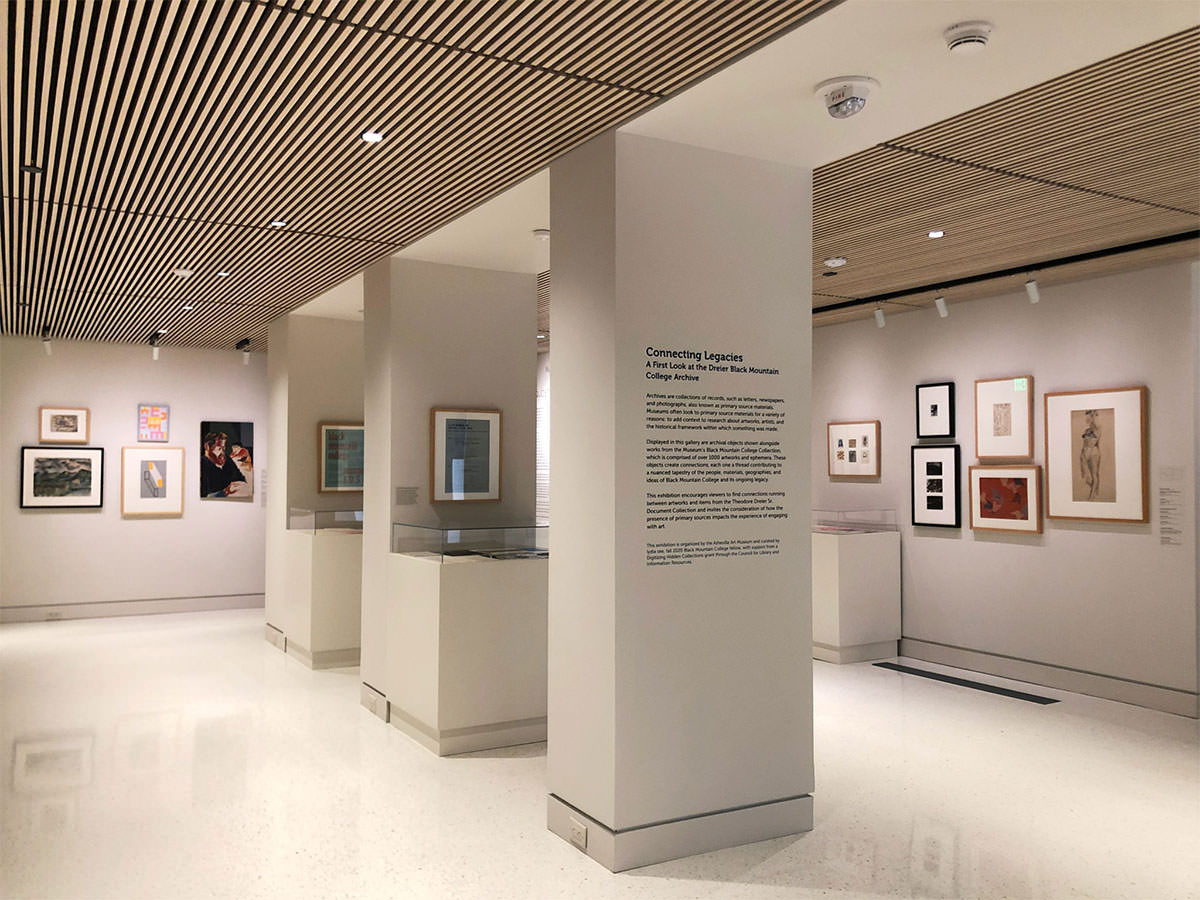
- This exhibition has passed.
Connecting Legacies: A First Look at the Dreier Black Mountain College Archive
January 27, 2021 @ 8:00 am - May 17, 2021 @ 5:00 pm

Black Mountain College was founded in order to provide a place where free use might be made of tested and proved methods of education and new methods tried out in a purely experimental spirit. There is full realization, however, of the fact that experiment is, for the individual, also experience; hence, no experiment is being tried which is not submitted beforehand to the test of reasonable likelihood of good results. It is for this reason that the College is for the present content to place emphasis upon combining those experiments and the results of those experiences which have already shown their value in educational institutions of the western world, but which are often isolated and prevented from giving their full value because of their existence side by side with thoughtless tradition.”
—Text from first BMC Catalogue, 1933
“This is lydia see, curator of Connecting Legacies. Archives are collections of records, such as letters, newspapers, and photographs, also known as primary source materials. Museums often look to primary source materials for a variety of reasons: to add context to research about artworks, artists, and the historical framework within which something was made.
Displayed in this gallery are archival objects shown alongside works from the Museum’s Black Mountain College Collection, which is comprised of over 1000 artworks and ephemera. These objects create connections, each one a thread contributing to a nuanced tapestry of the people, materials, geographies, and ideas of Black Mountain College and its ongoing legacy.
Highlighted in this exhibition are materials which focus on underrepresented narratives and the women and people of color of Black Mountain College. For instance, during the Summer Music Institute of 1944, almost 10 years to the day before the Brown vs. Board of Education Supreme Court Ruling, Alma Stone Williams became the first African American student invited to BMC. The following summer, musicians Roland Hayes and Carol Brice were welcomed to the College as its first African American Faculty. Programs from their performances are curated alongside student artworks made around the same time.
This exhibition encourages viewers to find connections running between artworks and items from the Theodore Dreier Sr. Document Collection and invites the consideration of how the presence of primary sources impacts the experience of engaging with art.”
This exhibition is organized by the Asheville Art Museum and curated by lydia see, fall 2020 Black Mountain College fellow, with support from a Digitizing Hidden Collections grant through the Council on Library and Information Resources.
